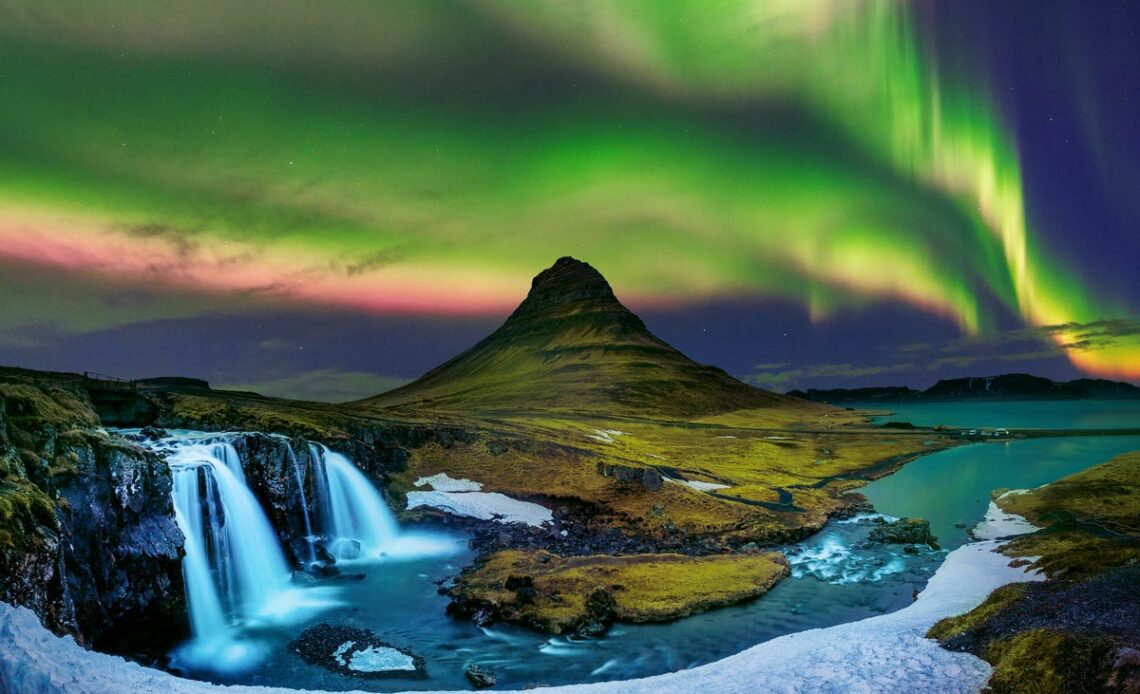The breathtaking ribbons of colour that make up the Northern Lights are a sight remembered forever by those lucky enough to have witnessed them. The experience is surreal, with vibrant hues of blue, green, pink and violet dancing across the night sky.
From its latitude at 65 degrees north, Iceland is one of the best places in the world to see the Northern Lights, otherwise known as the Aurora Borealis. As a rule, the Northern Light belt is between 65 and 72 degrees north, but the further you go above 66, the more chance you have of witnessing the phenomenon.
One benefit of heading to Iceland on the hunt for the aurora is that the gulf stream makes it a warmer location than other viewing places in Scandanavia if you go in September or March, when the average night-time temperature is 4C.
To see the Northern Lights, you need clear, cloudless skies, and Iceland offers plenty of remote spots with no light pollution. The country’s variety of dramatic landscapes, from waterfalls, cliffs and glaciers to rock formations and mountains, also creates unique opportunities for taking pictures of the lights as they hover overhead.
Read more on Iceland travel:
It’s never guaranteed that you’ll see the Northern Lights during a trip to Iceland, but you’ll increase your chances of experiencing them if you go when it’s completely dark and watch from a non-urban environment surrounded by nature. We’ve rounded up some of the country’s best destinations for star-gazing along with all the details you need to plan the perfect bucket list trip.
When is the best time to see the Northern Lights in Iceland?
Remote locations in Iceland provide clear conditions for views of the Northern Lights
(Getty Images/iStockphoto)
From September through to mid-April is when the nights are longest in Iceland, and is therefore the best time to see the Northern Lights. As you’ll have more chance of seeing the lights when it’s completely dark, it’s a good idea to look at a lunar calendar so you can avoid going around the time of a full moon, which could dim the light show. Aim to arrive about five days before new moon for a very dark week ahead, creating optimal conditions for viewing the lights.
September and March are the peak months of the period, especially around the times of the equinoxes. This is because the magnetic field of the solar wind from the sun that causes the Northern Lights faces at an optimal angle relative to Earth, so you’re likely to see brighter and bolder…
Click Here to Read the Full Original Article at The Independent Travel…
